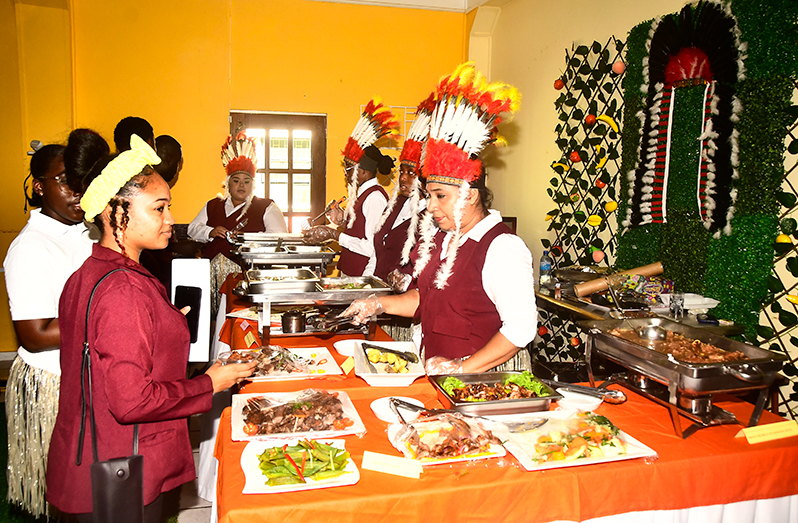Recipe Book launched by Carnegie School of Home Economics
By Dillon Goring
THROUGH the International Fund for Agriculture Development, the Government of Guyana has collaborated with the Carnegie School of Home Economics to embark on a six-year project for the Hinterland Communities of the country.
The name of the project is called Hinterland Environmentally Sustainable Agricultural Development (HESAD) Project.
This project aims to improve Indigenous Peoples’ livelihood through income generation and create an Indigenous Recipe Book.
Principal of the Carnegie School of Home Economics, Sharmaine Marshall, disclosed that the project seeks to improve their livelihood and resilience through income generation, access to assets, improved nutrition and adaptation to climate variability and change in the Indigenous community.

She also told this publication, “Through this project, Carnegie School of Home Economics is creating history here because it is the first documented book of Indigenous recipes, so what we did was to have a call for recipes. Those recipes were submitted and we conducted a testing kitchen and standardised the recipes,” Marshall was quoted as saying during her interview.
Marshall further added that, once the recipes are standardised, there is a further aspect to it and that is to have the taste kitchen, where persons from the Amerindian community have to buy in while at the same time raising nutritional awareness among the Indigenous community.
Marshall noted that the response to the publication of the Recipe Book has been overwhelming and traction is being gained as we go along thus far.
‘We are not changing traditional Recipes’
Both Marshall and Deputy Principal, Tandika Griffith, made it quite clear in their interviews that because of the historical nature of the recipe book, the recipe of traditional values cannot be changed.

“What we can suggest, for example, tuna, if you add anything to tuna, it becomes a soup, and we don’t want to do that. What we suggest is that this meal can be eaten with steamed vegetables and that is what we are trying to encourage among the indigenous nations,”Griffith explained.
She noted that these vegetables could be grown in the Amerindian villages, but our primary focus is to show how vegetables can be used to enhance nutritional value.
It was noted that each recipe has its own traditional value.
The project recently developed a Nutrition Strategy and Play book that outlined the nutritional problems of the beneficiaries of the HESAD Project in Regions 1 and 9 to make awareness interventions in nutrition especially concerning women, youth and children.




.png)









